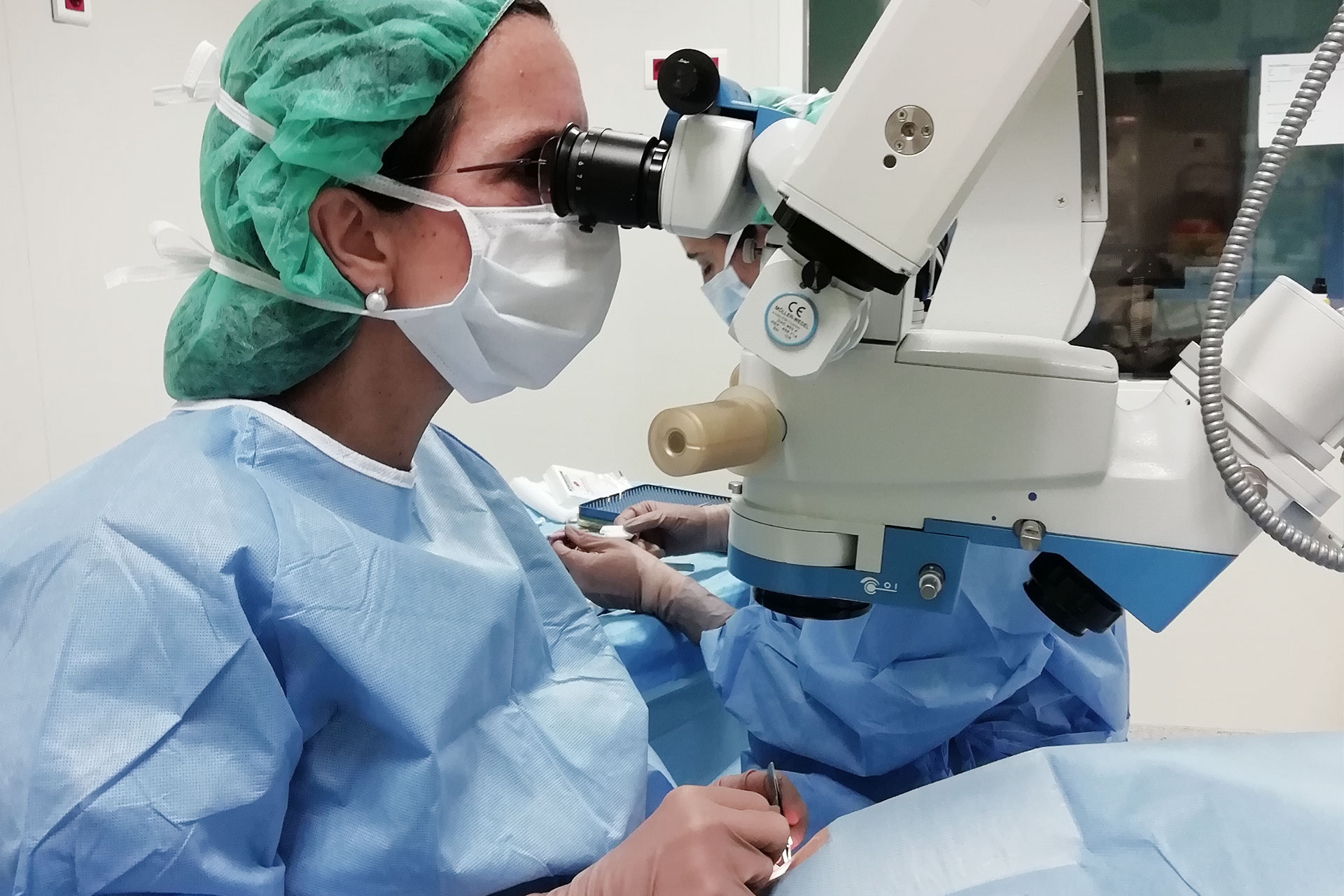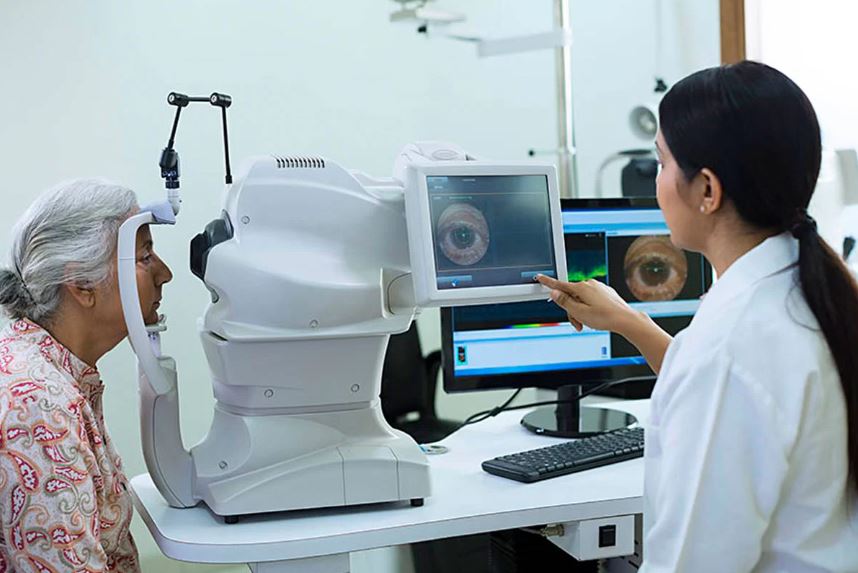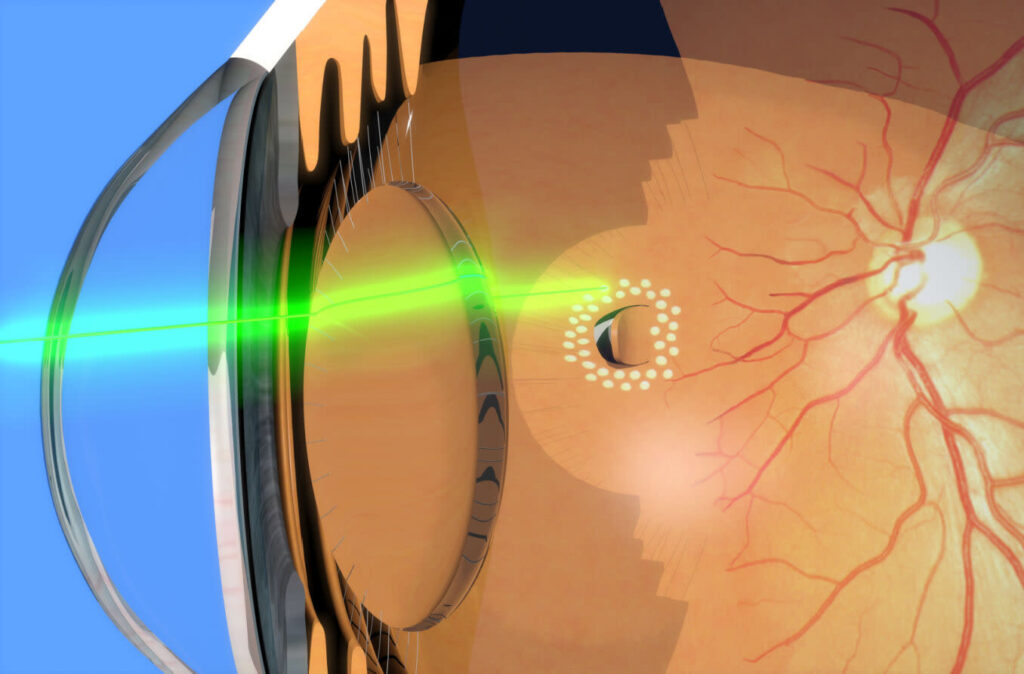In today’s fast-paced world, where our eyes are constantly exposed to screens and various forms of artificial light, safeguarding our vision has become more crucial than ever before. The health of our retinas, in particular, plays a significant role in maintaining optimal visual function. Fortunately, advancements in retinal treatments have revolutionized the way we approach the diagnosis and management of retinal diseases and conditions.
Understanding the Importance of Retinal Health
Before delving into the latest breakthroughs in retinal eye treatments, it’s essential to grasp the fundamental importance of retinal eye health. The retina, located at the back of the eye, is a thin layer of tissue responsible for converting light into electrical signals that are then transmitted to the brain via the optic nerve. Essentially, it acts as the gateway through which we perceive the world around us.
The Role of the Retina in Vision
The retina comprises specialized cells called photoreceptors, namely rods and cones, which play distinct roles in visual perception. Rods are responsible for detecting light and enabling vision in low-light settings, while cones facilitate color vision and visual acuity in well-lit conditions. Any disruption or damage to the retina can significantly impact these processes, leading to various visual impairments. Visit https://mercychildrensclinic.org/retinal-health-matters-a-comprehensive-guide-to-state-of-the-art-treatments for a comprehensive guide to state-of-the-art treatments.
Common Retinal Diseases and Conditions
Retinal diseases and conditions encompass a wide range of disorders that affect the normal functioning of the retina. Some of the most prevalent retinal ailments include age-related macular degeneration (AMD), diabetic retinopathy, retinal detachment, and retinitis pigmentosa.

AMD, often seen in older individuals, results in a gradual loss of central vision due to the breakdown of the macula, the central part of the retina responsible for sharp, detailed vision. This degenerative disease can have a profound impact on an individual’s quality of life, making it difficult to read, recognize faces, or perform daily tasks that require clear central vision.
Diabetic retinopathy, on the other hand, is a complication of diabetes that damages the blood vessels in the retina, leading to vision loss if left untreated. It is estimated that approximately one-third of people with diabetes have some form of diabetic retinopathy, making it a significant concern for individuals living with diabetes. Regular eye examinations and proper management of blood sugar levels are crucial in preventing or slowing down the progression of this condition.
Retinal detachment occurs when the retina peels away from its normal position, often necessitating emergency surgical intervention. This condition can cause sudden flashes of light, floaters, or a curtain-like shadow in the field of vision. Prompt medical attention is essential to prevent permanent vision loss, as the longer the detachment goes untreated, the greater the risk of irreversible damage to the retina.
Lastly, retinitis pigmentosa is a genetic disorder causing a progressive degeneration of the photoreceptor cells, resulting in night blindness and a narrowing of peripheral vision. This condition often manifests in childhood or adolescence and gradually worsens over time. While there is currently no cure for retinitis pigmentosa, ongoing research aims to develop treatments that can slow down its progression and improve the quality of life for those affected.
The Evolution of Retinal Treatments
Over the years, significant advancements have occurred in the field of retinal treatments. These breakthroughs have transformed the prognosis and management of retinal diseases, enhancing the prospects of preserving and even restoring vision in individuals suffering from these conditions.
Traditional Methods of Retinal Treatment
Traditionally, retinal treatments primarily focused on utilizing laser therapy and invasive procedures such as vitrectomy, scleral buckling, and pneumatic retinopexy. Laser therapy, often employed in diabetic retinopathy and retinal tears, uses a focused beam of light to seal leaky blood vessels or repair tears in the retina. Surgical interventions like vitrectomy involve removing the vitreous gel from the eye and replacing it with a clear solution to restore retinal stability.
The Shift Towards Modern Retinal Therapies
Recent years have witnessed a paradigm shift in retinal treatments, with a transition towards less invasive and more targeted approaches. Novel therapies, including intravitreal injections and minimally invasive vitreoretinal surgeries, have revolutionized the field.
Intravitreal injections have emerged as a standard treatment for various retinal diseases, delivering medication directly into the vitreous cavity of the eye. This provides a localized and concentrated therapeutic effect, reducing side effects and achieving better outcomes. Furthermore, the advent of advanced imaging techniques, such as optical coherence tomography (OCT), enables precise visualization and monitoring of retinal changes, aiding in accurate diagnosis and timely intervention.

Another exciting development in retinal treatments is the use of gene therapy. This cutting-edge approach aims to correct genetic mutations that cause retinal diseases by introducing healthy genes into the affected cells. By targeting the root cause of the condition, gene therapy holds great promise for long-term vision restoration.
Moreover, researchers are exploring the potential of stem cell therapy in the treatment of retinal diseases. Stem cells have the remarkable ability to differentiate into various cell types, including retinal cells. This opens up the possibility of regenerating damaged retinal tissue and restoring visual function. While still in the experimental stage, stem cell therapy shows immense potential for revolutionizing retinal treatments in the future.
Innovations in Retinal Treatments
Thanks to relentless research efforts, innovations in retinal treatments have propelled the field forward, fostering significant progress in both surgical procedures and medication-based therapies.
Retinal treatments have come a long way in recent years, with advancements in surgical procedures and medication therapies revolutionizing the field. These breakthroughs have not only improved patient outcomes but also enhanced the quality of life for individuals suffering from retinal conditions.
Advances in Surgical Procedures
One notable advancement in retinal surgery is the use of smaller incisions and specialized instruments, leading to minimally invasive approaches. Micro-incision vitrectomy surgery (MIVS) dramatically reduces postoperative discomfort and enables faster recovery. This groundbreaking technique involves the use of tiny incisions, allowing surgeons to perform delicate procedures with utmost precision. The smaller incisions also minimize the risk of complications and infection, ensuring a safer surgical experience for patients.
Moreover, the development of advanced surgical visualization systems has revolutionized the way retinal surgeries are performed. Heads-up 3D viewing platforms provide surgeons with a highly detailed, immersive view of the surgical field. This enhanced visualization not only improves surgical precision but also reduces the strain on the surgeon’s eyes, neck, and back. By eliminating the need for surgeons to constantly look into a microscope, these innovative systems enhance surgeon ergonomics, enabling them to perform complex procedures with greater ease and accuracy.
Progress in Medication and Drug Therapies
Pharmaceutical innovations have also played a pivotal role in advancing retinal treatments. The introduction of anti-vascular endothelial growth factor (anti-VEGF) drugs, administered via intravitreal injections, has revolutionized the management of neovascular AMD and diabetic macular edema. These medications effectively suppress abnormal blood vessel growth and reduce retinal fluid accumulation, consequently preserving and improving visual function.
Furthermore, ongoing research is focused on developing targeted drug delivery systems that can precisely deliver medications to the retina, minimizing systemic side effects. These advancements hold immense promise for the future of retinal treatments, as they have the potential to enhance treatment efficacy while minimizing the burden on patients.
In conclusion, the field of retinal treatments has witnessed remarkable advancements in recent years. From minimally invasive surgical techniques to innovative medication therapies, these breakthroughs have transformed the landscape of retinal care. As research continues to push the boundaries of what is possible, the future holds even greater potential for improving the lives of individuals affected by retinal conditions.

The Future of Retinal Treatments
As technology continues to advance at an exponential pace, the future of retinal treatments holds tremendous promise. Emerging developments, driven by scientific breakthroughs, are set to transform the landscape of retinal healthcare.
Predicted Developments in Retinal Health Care
Researchers are actively exploring gene therapy as a potential treatment for inherited retinal diseases. By targeting specific genetic mutations, gene therapy offers the possibility of not only halting disease progression but also restoring retinal function.
Imagine a world where individuals with inherited retinal diseases no longer have to face the fear of losing their vision. Gene therapy holds the potential to be a game-changer in the field of retinal healthcare. By delivering healthy copies of the defective genes into the retina, scientists aim to correct the underlying genetic mutations responsible for these diseases. This groundbreaking approach could not only slow down the progression of the condition but also restore vision, giving hope to millions of people worldwide.
Additionally, advancements in stem cell research hold the potential for regenerating damaged retinal tissue, opening new avenues for restoring vision in previously untreatable conditions. Stem cells, with their remarkable ability to differentiate into various cell types, offer a promising solution for repairing and replacing damaged retinal cells. This could be a significant breakthrough for individuals suffering from retinal degenerative diseases, such as age-related macular degeneration, where the loss of retinal cells leads to irreversible vision loss.
The Impact of Technology on Retinal Treatments
Technological innovations continue to shape retinal treatments, driving improvements in diagnosis, management, and monitoring. Artificial intelligence and machine learning algorithms enable more accurate and efficient analysis of retinal imaging data, aiding in early detection and precise tracking of disease progression.
Imagine a future where retinal diseases can be detected and monitored with unprecedented precision. With the help of artificial intelligence and machine learning, healthcare professionals can analyze vast amounts of retinal imaging data in a fraction of the time it would take a human. This not only allows for early detection of diseases but also enables personalized treatment plans tailored to each individual’s unique needs. By harnessing the power of technology, we can revolutionize the way retinal diseases are diagnosed and managed, ultimately improving patient outcomes.
Furthermore, wearable devices and telemedicine solutions empower patients to monitor their retinal health remotely, bridging geographical barriers and enhancing access to specialized care. Imagine being able to track the health of your retina from the comfort of your own home, without the need for frequent visits to the doctor’s office. Wearable devices equipped with retinal imaging capabilities and telemedicine platforms enable real-time monitoring and remote consultations with healthcare professionals. This not only improves convenience for patients but also ensures that timely interventions can be made, preventing potential complications and preserving vision.
Maintaining Retinal Health
While advancements in retinal treatments offer significant hope, maintaining retinal health through proactive measures remains crucial. By incorporating healthy habits and regular check-ups into our lives, we can take proactive steps towards preserving our vision.
Preventative Measures for Retinal Health
Protecting our eyes from harmful ultraviolet (UV) radiation by wearing sunglasses and limiting exposure to bright sunlight is essential for retinal health. Maintaining a balanced diet rich in fruits, vegetables, and omega-3 fatty acids provides the necessary nutrients to promote retinal health. Additionally, quitting smoking and managing chronic conditions such as diabetes and hypertension are vital steps in reducing the risk of retinal diseases.
Regular Check-ups and Early Detection
Scheduling regular eye examinations, especially for individuals at higher risk of retinal diseases, allows for early detection and prompt intervention. Comprehensive eye exams, including dilated retinal examinations and OCT imaging, enable eye care professionals to detect subtle changes in the retina and intervene before irreversible damage occurs. Timely intervention can significantly improve treatment outcomes and preserve visual function.
Conclusion
The latest breakthroughs in retinal treatments have transformed the landscape of retinal healthcare, empowering both patients and healthcare providers with novel tools and approaches. As we continue to unravel the intricacies of retinal diseases and conditions, the future holds immense promise for preserving and restoring vision, ultimately safeguarding our most essential sense and enhancing our quality of life.




